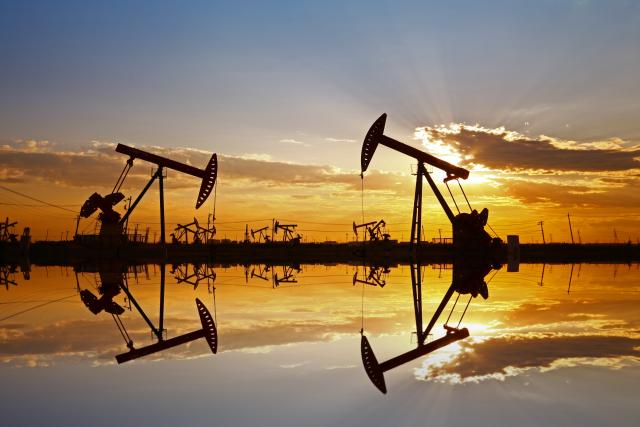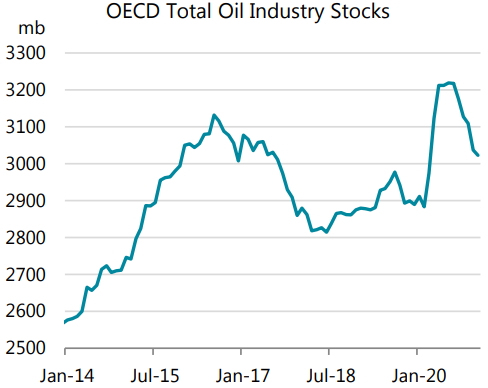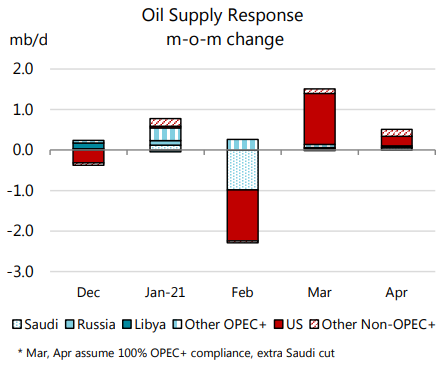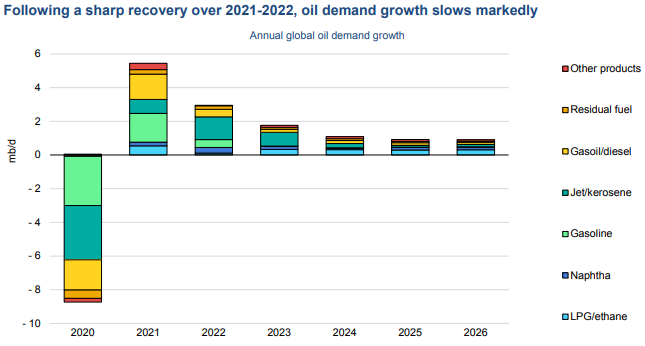
(Source: Shutterstock.com)
An extended surge in oil prices is unlikely as the world rebounds from the pandemic given ample supply but changes are seen in demand and gasoline may have peaked, the International Energy Agency (IEA) said on March 17.
“Oil’s sharp rally to near $70 a barrel has spurred talk of a new supercycle and a looming supply shortfall. Our data and analysis suggest otherwise,” the IEA said in its monthly report.
“For a start, oil inventories still look ample compared with historical levels despite a steady decline...On top of the stock cushion, a hefty amount of spare production capacity has built up as a result of OPEC+ supply curbs,” it said.


OPEC and its allies, a group dubbed OPEC+, largely kept limits on production this month, galvanizing the market and causing some investors to predict a supercycle—a large, multi-year price rise.
“The prospect of stronger demand and continued OPEC+ production restraint point to a sharp decline in inventories during the second half of the year,” the Paris-based energy watchdog said.
“For now, however, there is more than enough oil in tanks and under the ground to keep global oil markets adequately supplied.”

Changes to work and travel patterns wrought by the COVID-19 pandemic as well as governments’ low-carbon targets have permanently altered the trajectory for demand, the IEA added, with gasoline possibly never to recover to pre-crisis levels.
Increased gasoline use in developing countries will be offset by rising fuel efficiency and a switch to electric vehicles in wealthy nations, the IEA said in its Oil 2021 five-year outlook, also published on March 17.
Together with reduced consumption due to increased remote working likely to continue into the near future, gasoline demand may have peaked in 2019, it said.

“Consumption should continue to rise strongly in 2022 ... narrowing the gap with pre-pandemic levels. However, beyond that, gasoline demand is likely to stagnate for several years,” the report said.
The Paris-based watchdog lowered its outlook for oil demand for 2025 by 2.5 million barrels per dady from its forecast last year but maintains that oil demand has yet to peak and is set to return to 2019 levels by 2023.

“Rapid changes in behavior from the pandemic and a stronger drive by governments towards a low-carbon future have caused a dramatic downward shift in expectations for oil demand over the next six years,” the IEA said.
Recommended Reading
IOG Resources Acquires Interests from Civitas
2024-05-06 - IOG Resources acquired interests in the Denver-Julesburg Basin from Civitas Resources.
Exxon Shale Exec Details Plans for Pioneer’s Acreage, 4-mile Laterals
2024-05-03 - Exxon Mobil plans to drill longer, more capital efficient wells in the Midland Basin after a major boost from the $60 billion Pioneer Natural Resources acquisition. Data shows that Exxon is a leading operator drilling 4-mile laterals in the Permian’s Delaware Basin.
Infrastructure Company Savage Acquires Houston’s Texon
2024-05-03 - Texon, a midstream service provider, will continue operations under its legacy brand.
Antero Midstream Buys Summit Midstream Assets in $70M Deal
2024-05-03 - The deal by Antero Midstream strengthens Antero Resources’ gathering and compression in Marcellus Shale.
NSTA Offers 31 More Licenses in Latest Licensing Round
2024-05-03 - The leasing round attracted 115 bids from 76 companies vying for 257 blocks and partial blocks in the U.K. Continental Shelf.





